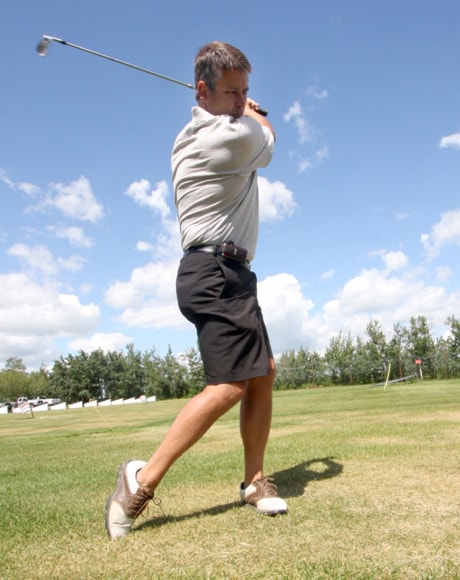Golf is the most diverse, complicated and rewarding game I have ever played.
A number of years ago, the PGA of America assembled a panel of golf instructors to determine the total number of body positions that makes up a good golf swing. The results of this study came back with there being approximately 1,200 different combinations.
Combine this with having to hit approximately 2,000 golf balls the proper way to make one change in your swing and you get an idea of the complexity of this great game we call golf. Therefore, the best way for me to describe this game is humbling.
The most common reason golfers take instruction is to create consistency. Assuming that you make good contact, most of us desire to eliminate or reduce the amount of slice that we put on a ball (a shot that slides to the right for right-handed golfers). It makes no difference if you have a slice or a hook — you want to hit it straighter.
Playing your normal shot in windy conditions will most certainly increase the amount of movement you have on a shot, therefore causing undesired results. Leaning to hit a knock-down shot when it is breezy will assist in hitting the ball straighter and therefore lowering your overall score.
There are a number of key swing fundamentals that you must use to properly execute this shot. These swing fundamentals include: ball position; backswing; club selection; finish position; and tempo. Implementing these changes into your swing will assist you in hitting the ball lower and therefore not allowing the wind to affect your ball flight as much.
The idea of a knock-down shot is to hit the ball lower so that the wind does not affect the flight as much as if you hit it up in the air. As a result, the first step is to alter the ball position. The ball position for all irons should be approximately five cm (two inches) inside of your front heel. To assist in keeping the ball lower, position the ball in the middle of your stance. This will ensure that your swing plane is steeper as you approach the ball, creating less loft on the club that you are using at impact and therefore lower trajectory.
The next step is take a shorter backswing. Most golfers have a tendency to take the club back too far and as a result swing as hard as they can. When playing into the wind, this will create too much side and back spin on the golf ball and will result in either hitting the ball up in the air, coming up short of your target or causing the ball to slice or hook more. A shorter than normal backswing will not allow you to swing too hard, and as a result will send the ball cutting straight through the wind.
Club selection is a very important part of this process. First of all, you need to be aware of the direction of the wind. If you are hitting into the wind, you need to take more club than normal.
If you are hitting downwind, you may need to use less club than normal for the distance you are travelling. Which club you choose depends a lot on the severity of the wind you are faced with. Only you can determine this.
Side winds can be tricky when it comes to club selection. If you are a right-handed golfer and you play a slice, the ball can travel further than normal if the wind direction is from left to right. The reason for this is that once the ball is up in the air, it has a tendency to ride the wind, possibly travelling further than normal. The opposite is true if the wind direction is from right to left. Consider this when choosing your club for the distance you are faced with.
The most important position in golf is the finish position. This is no different than when you are faced with a shot in windy conditions.
To successfully hit this shot, you need to swing into a full-finish position and ensure you have good balance. Balance is critical for all sports and is no different for the golf swing.
Finally tempo, tempo, tempo. Tempo is the speed at which you swing back and through to your finish position. Players in general tend to swing too fast when it is windy.
As a result, the contact is not crisp, causing a poor shot. Swinging with a smooth tempo will assist in making solid contact and make for a more desirable result.
Scott Bergdahl is the head professional at the Lakewood Golf Resort east of Sylvan Lake. His column appears Tuesdays in the Advocate.
